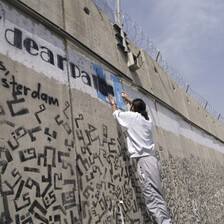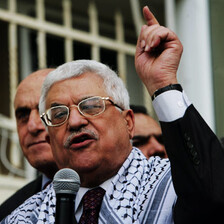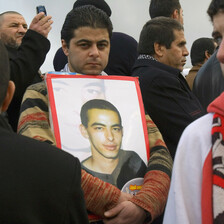The Electronic Intifada 30 March 2001
In various news reports, the Palestinian minority in Israel is selectively termed as “Arab Israelis” or “Israeli Arabs.” Palestinians living in what became known as Israel call themselves “Palestinians”, sometimes further specifying that they are “Palestinians of 48” and thus are an integral part of the Palestinian people.
Palestinian citizens of Israel account for around 20 percent of the population. They are those Palestinians who remained during and after the 1948 war, at which time they numbered approximately 170,000. Between 1948 and 1966, these Palestinians were subjected to military rule that applied only to them.
The vast majority of them live in all-Palestinian towns and villages, which are located in three main areas: in the Galilee in the north, in the “little triangle” in the center, and in the Naqab in the south. There are also six mixed cities and several dozen unrecognized villages.
Even though Israeli Jews and the West consider Israel a democracy these Palestinians are subject to a wide variety of overt as well as more covert forms of discrimination concerning their individual rights, opportunities and provision of services. Palestinians in Israel have the lowest socio-economic status of all groups in Israel, and wide gaps exists between Israeli Jews and Palestinians in income, health provisions, education levels, employment and housing conditions.
Since Sunday October 1, 2000, thirteen Palestinian citizens in Israel have been killed in clashes with Israeli police in the Palestinian towns of Umm el Fahem, Jat, Nazareth, Ma’awia, Arrabe, Sakhnin, Kufr Manda, and Kufr Kana. Their deaths were the result of the Israeli police’s brutal attempts to contain protests, which have been widespread in Israel and the occupied Palestinian territories.
The Higher Follow Up Committee on Arab Affairs called a general strike on Sunday October 1, in response to the violence in the Occupied Territories. The strike received widespread support from Palestinians in Israel, who demonstrated their solidarity with Palestinians living in the Occupied Territories and also wanted to express their disappointment and frustration with the continuing structural discrimination they face within Israel.
On Sunday, October 1, Israeli police attacked protesters in Umm el Fahem, Nazareth and Kufr Kanna. The Israeli police entered these Palestinian towns and injured hundreds of civilian protesters by using live ammunition, rubber-coated steel bullets and tear gas.
In Umm al-Fahem, two demonstrators were shot with live ammunition in the head and chest, and immediately died from their injuries.
On Monday, October 2, there were further clashes between Palestinian demonstrators and the Israeli police force, which surrounded and closed several Palestinian villages and main roads adjacent to the villages throughout Israel. Elsewhere, another six Palestinian citizens in Israel were killed and hundreds injured as a result of the police’s brutal and exaggerated response to these demonstrations by unarmed citizens of a supposed democracy.
Hundreds of police occupied Nazareth, resulting in a two-hour confrontation. The Israeli police used snipers shooting with live ammunition from rooftops during the confrontation.
On Sunday, October 8, Omar Mohammad Akawi (42) and Wasam Yizbek (25), two Palestinian citizens of Israel, were killed when hundreds of Jewish residents from the adjacent Jewish development town of Nazareth Illit attacked the eastern neighborhood of Nazareth. They hurled stones and shot at Palestinian houses, attempted to set the houses on fire and fired live ammunition at Palestinians.
Israeli police protected the Jewish Israelis and allowed them to continue their attack on Palestinian citizens of Israel. Akawi was killed with live ammunition. Four other Palestinian citizens of Israel were brought to the hospital in critical condition. 25 Palestinians were injured.
The thirteen Palestinian citizens of Israel who have been killed in Israel since Friday, October 29, include:
- Ahmed Ibrahim Jabarin (19 yrs from Umm el Fahem)
- Mohammed Mahmud Jabarin (24 yrs from Umm el Fahem)
- Rami Gharra (21 yrs from Jat)
- Eyad Sobhi Lawabny (29 yrs from Nazareth)
- Mustapha Abu-Jared (15 yrs from Gaza—lived and worked in Umm el Fahem)
- ‘Ala Khaled Nasser (22 yrs from Arrabe)
- Aseel Hassan Asleh (18 yrs from Arrabe)
- Emad Faraj Ghanem (25 yrs from Sakhnin)
- Waleed Abd el-Menem Abu Saleh (21 yrs from Sakhnin)
- Ramez Abbas Bushnaq (25 yrs from Kufr Manda)
- Mohammed Khalib Hamaysa (21 yrs from Kufr Kan’na)
- Omar Mohammed Akawi (42 yrs from Nazareth)
- Wasam Yizbek (25 yrs from Nazareth).
Related links



